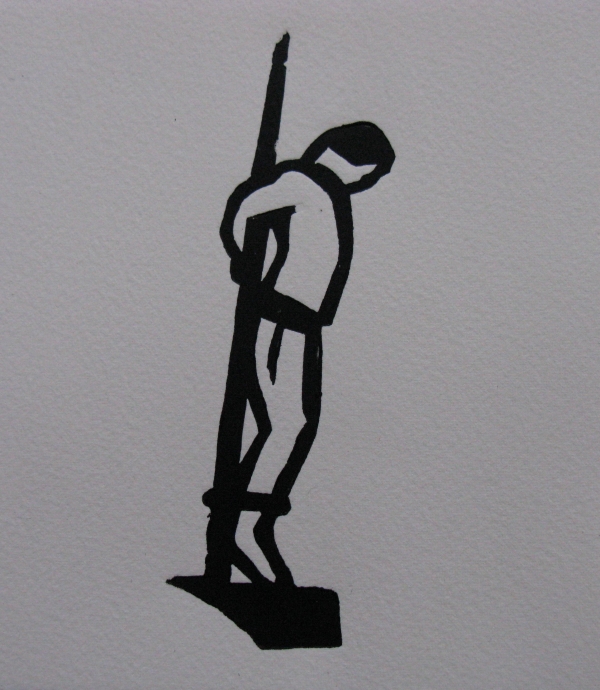Disobedience, Rebellion and Conscientious Objectors
Written by Soldiersandorder NZ-FRWe have been doing a lot of prep work for this. We have our inquiry focus questions and from that have decided that the first steps will be on the focus of pacifism before WWI, conscientious objectors and opposition to conscription. These first steps will be heavily scaffolded with research booklets and specific tasks. Here is the focus of the students inquiry.
I think that as the students put together work they can report their progress via blogposts:
Disobedience and Rebellion of Soldiers and the Treatment of Conscientious Objectors in the First World War in France and New Zealand – a comparative historical study.
La désobéissance et la rébellion des soldats et le traitement des objecteurs de conscience dans la Première Guerre mondiale en France et en Nouvelle-Zélande - une étude historique comparée.
Introduction
The French Army Mutinies of 1917 took place amongst the French troops on the Western Front in Northern France. They started just after the conclusion of the disastrous Second Battle of the Aisne, the main action in the Nivelle Offensive and involved, to various degrees, nearly half of the French infantry divisions stationed on the western front. The mutinies were kept secret and their full extent and intensity were not revealed until the last third of the twentieth century. The military authorities took swift and decisive action: mass arrests were followed by mass trials
In 1917 fourteen conscientious objectors from New Zealand were sent to the Western Front where they were subjected to pressure and punishment in order to make them agree to fight in WWI. They were held at Étaples and Dunkerque in France and in Belgium near Ypres at Oudredoum and ‘Mud Farm’. Some eventually agreed to cooperate, but four men (Archibald Baxter, Mark Briggs, Henry Patton and Lawrence Kirwin) refused and were subject to ‘Field Punishment No 1, colloquially called ‘the Crucifixion’, where these men were tied to a post in the open with their hands bound tightly behind their backs and their knees and feet bound near the front line. Unable to get the men to change their minds, they were sent to the front line trenches. Briggs refused to walk and was dragged across the duck-board. They were all regularly beaten.
Those objectors in New Zealand not sent to France were imprisoned, the most notorious prison being the Wanganui Detention Barracks where they were subjected to brutalities.
Students from Baradene College in Auckland, New Zealand and the Lycée Professionnel Gay-Lussac, Chauny, France will jointly research the level of disobedience and rebellion of soldiers on the Western Front and the treatment of conscientious objectors in both France and New Zealand.
Key aims:
Part One: Disobedience
+ How common was disobedience among soldiers?
+ For what reason did soldiers disobey military orders given to them?
+ What examples of disobedience are there in the historical record?
+ How did the military authorities punish disobedience?
Part Two: Rebellion
+ Why did the French Army Mutinies of 1917 take place?
+ Where did it take place and how many soldiers were involved?
+ How serious was the mutiny perceived by authorities at the time?
+ What actions were taken by the authorities towards those who mutinied?
+ Did the mutiny in the French Army in 1917 have any long term consequences?
Part Three: Comparative Research
+ How did the other Allied Forces (eg: Britain, The USA, Canada, Australia and New Zealand) on the Western Front deal with disobedience and rebellion?
Part Four: Conscientious Objectors
+ What were the causes of pacifism and anti-conscription within society which impelled men to declare themselves conscientious objectors? (The focus for this part of the research would be on pacifism in society before the war and in the New Zealand historical context would include looking at opposition to Compulsory Military Training before the First World War.)
+ What actions were undertaken by those involved in the movements against conscription of men as soldiers? (This would include looking at Socialist objectors and Christian pacifist objectors.)
+ What were the social and political features of the protests during the First World War?
+ What was the government’s policy towards those who refused to fight?
+ How were conscientious objectors treated in New Zealand and France?
+ Why did the authorities have this policy conscientious objectors?
Part Five: Making Conclusions
Make conclusions form the research findings on the historical significance of Disobedience, Rebellion and Conscientious Objectors.
+ What comparisons can be made between French and New Zealand society’s viewpoints on disobedience, rebellion, conscientious objectors?
This may include: Looking at Historical Trends;
- What changed over a period of time concerning the pacifist movement?
- How was the government policy affected by rebellion, disorder and the conscientious objectors pacifist stance? (Consider on both continuity and change)
- How did the public’s opinion change due to these events?
- How did those showing dissent change their tactics, behaviour and/or actions?
- Can patterns be identified that can lead us as historians to a clear conclusion?
Latest from Soldiersandorder NZ-FR
- Shared Histories exhibition posters in Wellington
- Prime Minister John Key with Baradene College Students and Shared Histories exhibition.
- Shared Histories exhibition Opening in Wellington. Baradene College students Olivia Mendonca and Genevieve Bowler with the Governor-General of New Zealand, Sir Jerry Mateparae.
- Our project makes it to Elizabeth II Pukeahu Education Centre [Wellington] launch - wow
- Project becomes an e-book at Auckland Libraries!
